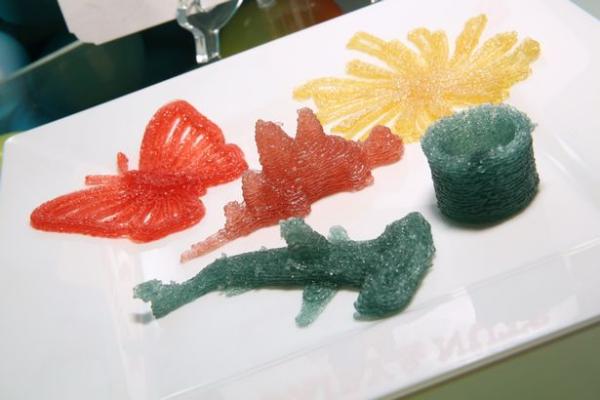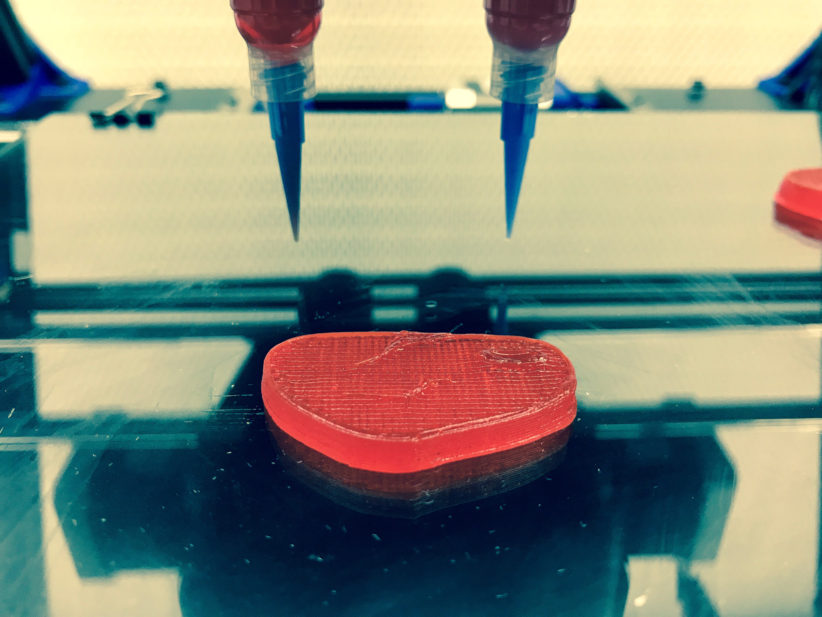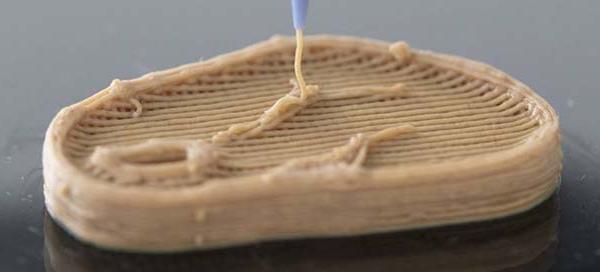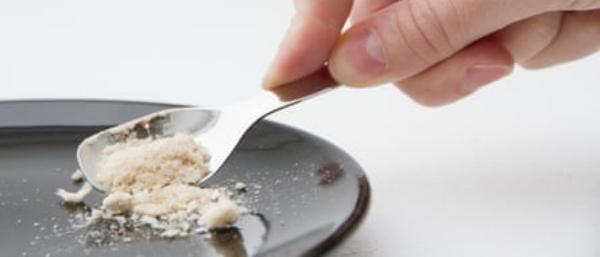"3d printed food" means 3 VERY different things
At least three, that is. Not equally realistic, or fair.
Means 3 things
Making funny or custom-looking food
This is when 3D printers are used just to model ordinary food of whatever sort in unusual shape, for fun or on demand:

<u><em><strong>CAPTION:</strong>
<a href="https://3dprintingindustry.com/news/3d-printed-candy-fit-willy-wonka-94265/" target="_blank">3D Printed Vegan Candy</a>
</em></u>
A more worthy version of this activity is the usage of 3D printers to make snacks out of otherwise completely unusable food waste:

Making the perfect food… for the rich only
This is the nightmare described in “your food will shop for you (If you are rich, that is)":
“New production technology, from 3D printing to hydroponic growing to cell-cultured meat, will make it easier to create food products personalized to the individual consumer."
“The steak I buy for dinner could be grown exactly to my calorie needs and preferred protein-to-fat ratio, plus extra iron to nip that slight anemia in the bud, and made just in time, based on my eating patterns."
Carbon neutral, mass production of affordable food, in ways impossible otherwise
This is a much worthwhile endeavour is, in short, the combination of two totally different processes:
- produce some “food paste”
- use 3D printing to automatically package it, or make it look and feel just like traditional food
The food paste can be made either with “natural” biological matter that, historically, has never been used for large scale food production yet (e.g. algae or insects), or with totally new living beings or materials and methods.

Rice, peas and seaweed, for example, are the ingredients used by Spanish startup Novameat to make the “world’s first” 3D-printed vegan/meat-free steak:

Detail of 3D printing a Novameat steak
</em></u>
A totally new “food paste”, instead, is what Solar Foods announced in June 2019 plans to start selling millions of meals based on “food from electricity, water and air” within two years. That food would be a protein-heavy powder called Solein, that looks and tastes like wheat flour. Solein could be used to 3D print something, or be used just used as is, together with other ingredients when cooking:

Solein production would be similar to brewing beer: produced by living microbes put in liquid and fed with carbon dioxide and hydrogen bubbles, which have been released from water through the application of electricity.
In both the Novameat and Solein cases 3D printing is essential to produce, in the most efficient way possible, solid food with a texture that does feel like some “real” raw food (“fibrous flesh” in Novameat’s case). Sure, strictly speaking what Novameat does is “not meat but trash patties, but can we still be so picky?
Reality check
Considering the status of the world in 2019, the third class of “3D printing food” activities looks immensely more worthy and urgently needed than the others. The more of it we get, the better. As long as (see here for extra details):
- it produces food that keeps people alive, that is meaningful quantities of proteins and calories, in forms that people like to eat. Not just lettuce, spices or snacks
- the whole process is not simply, as Solar Foods claims of Solein, “carbon-neutral without wasting land or water”: it has to consume much less land, water and other raw resources than other methods. Without antibiotics or pesticides. Otherwise it doesn’t solve any real problem, in the long run. We already know how to make chicken meat in large cages, “without consuming land”
- above all:
- produces usable food even without 3D printing. 3D printing is cool and great for investors, especially when patents are involved. But if it is a fancy addition that consumes extra energy, let’s use it as little as possible (for recycling waste, maybe)
- the whole process is based on open technologies that can be affordably used without any single country or corporation locking them
Any “solution” without these characteristics will have little or no relevance for feeding the world population (which is synonimous of “preventing wars”, in case you had not noticed). Even if it is the most glamorous startup of the day.
Oh, and of course, as far as YOU are concerned, don’t forget to just “eat food. Not much. Mostly vegetables”. Wherever that food comes from, or which technologies were used to make it.
Who writes this, why, and how to help
I am Marco Fioretti, tech writer and aspiring polymath doing human-digital research and popularization.
I do it because YOUR civil rights and the quality of YOUR life depend every year more on how software is used AROUND you.
To this end, I have already shared more than a million words on this blog, without any paywall or user tracking, and am sharing the next million through a newsletter, also without any paywall.
The more direct support I get, the more I can continue to inform for free parents, teachers, decision makers, and everybody else who should know more stuff like this. You can support me with paid subscriptions to my newsletter, donations via PayPal (mfioretti@nexaima.net) or LiberaPay, or in any of the other ways listed here.THANKS for your support!